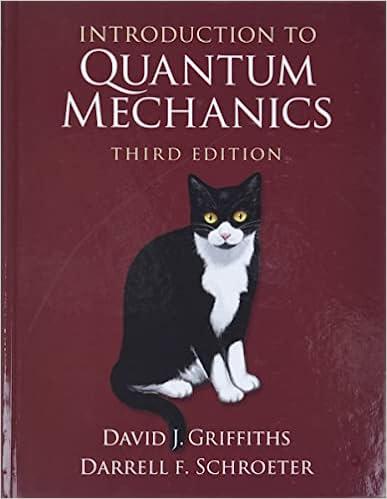(a) At time t = 0 a large ensemble of spin-1/2 particles is prepared, all of them...
Question:
(a) At time t = 0 a large ensemble of spin-1/2 particles is prepared, all of them in the spin-up state (with respect to the z axis). They are not subject to any forces or torques. At time t1 > 0 each spin is measured— some along the z direction and others along the x direction (but we aren’t told the results). At time t2 > t1 their spin is measured again, this time along the x direction, and those with spin up (along x) are saved as a subensemble (those with spin down are discarded). Question: Of those remaining (the subensemble), what fraction had spin up (along z or x, depending on which was measured) in the first measurement?
(b) Part (a) was easy—trivial, really, once you see it. Here’s a more pithy generalization: At time t = 0 an ensemble of spin-1/2 particles is prepared, all in the spin-up state along direction a. At time t1 > 0 their spins are measured along direction b (but we are not told the results), and at time t2 > t1 their spins are measured along direction c. Those with spin up (along c) are saved as a subensemble. Of the particles in this subensemble, what fraction had spin up (along b) in the first measurement? Use Equation 4.155 to show that the probability of getting spin up (along b) in the first measurement is P+ = Cos2 (θab/2), and (by extension) the probability of getting spin up in both measurements is ![]() Find the other three probabilities (P+→, P-+, and P--). Beware: If the outcome of the first measurement was spin down, the relevant angle is now the supplement of θab.
Find the other three probabilities (P+→, P-+, and P--). Beware: If the outcome of the first measurement was spin down, the relevant angle is now the supplement of θab.
Step by Step Answer:

Introduction To Quantum Mechanics
ISBN: 9781107189638
3rd Edition
Authors: David J. Griffiths, Darrell F. Schroeter





